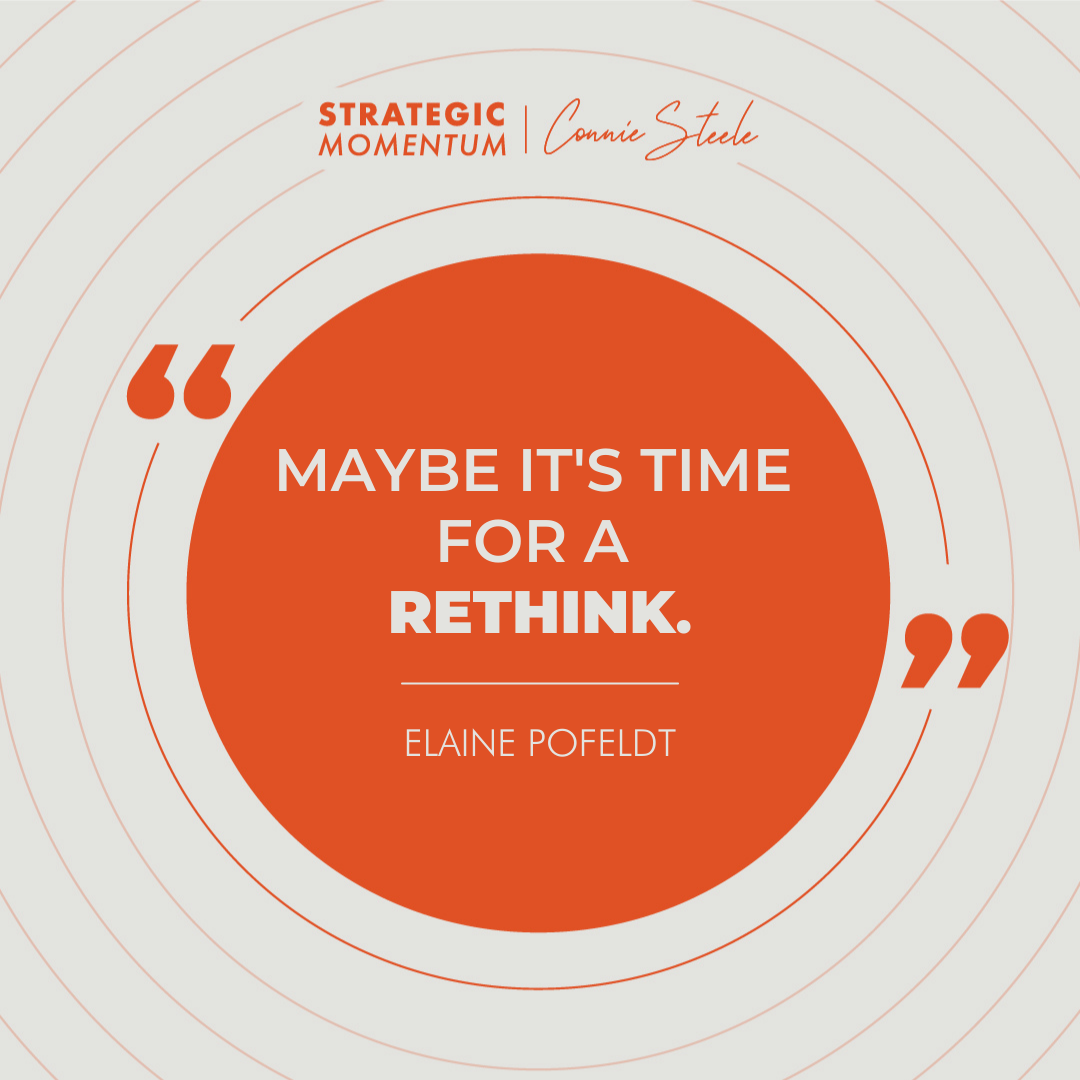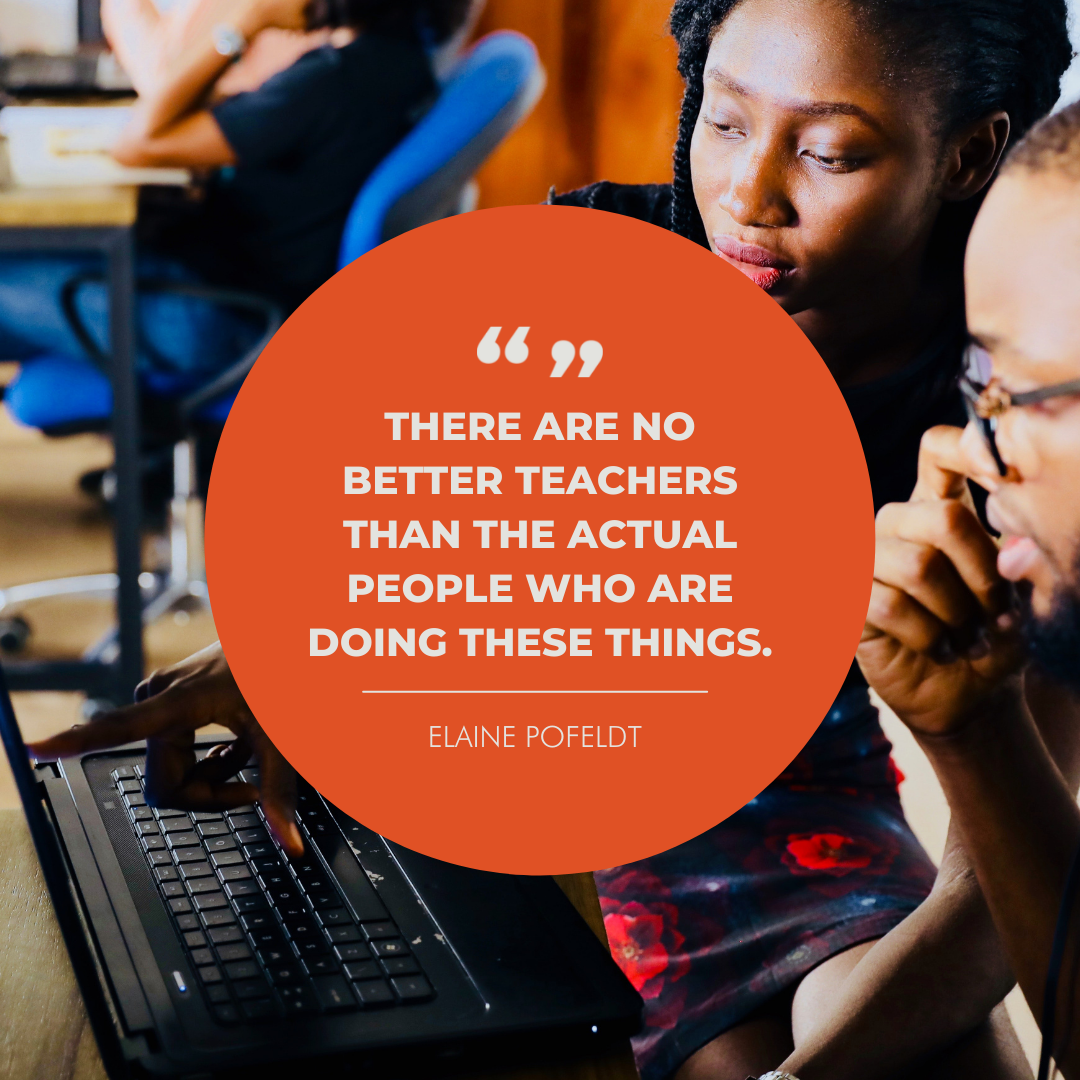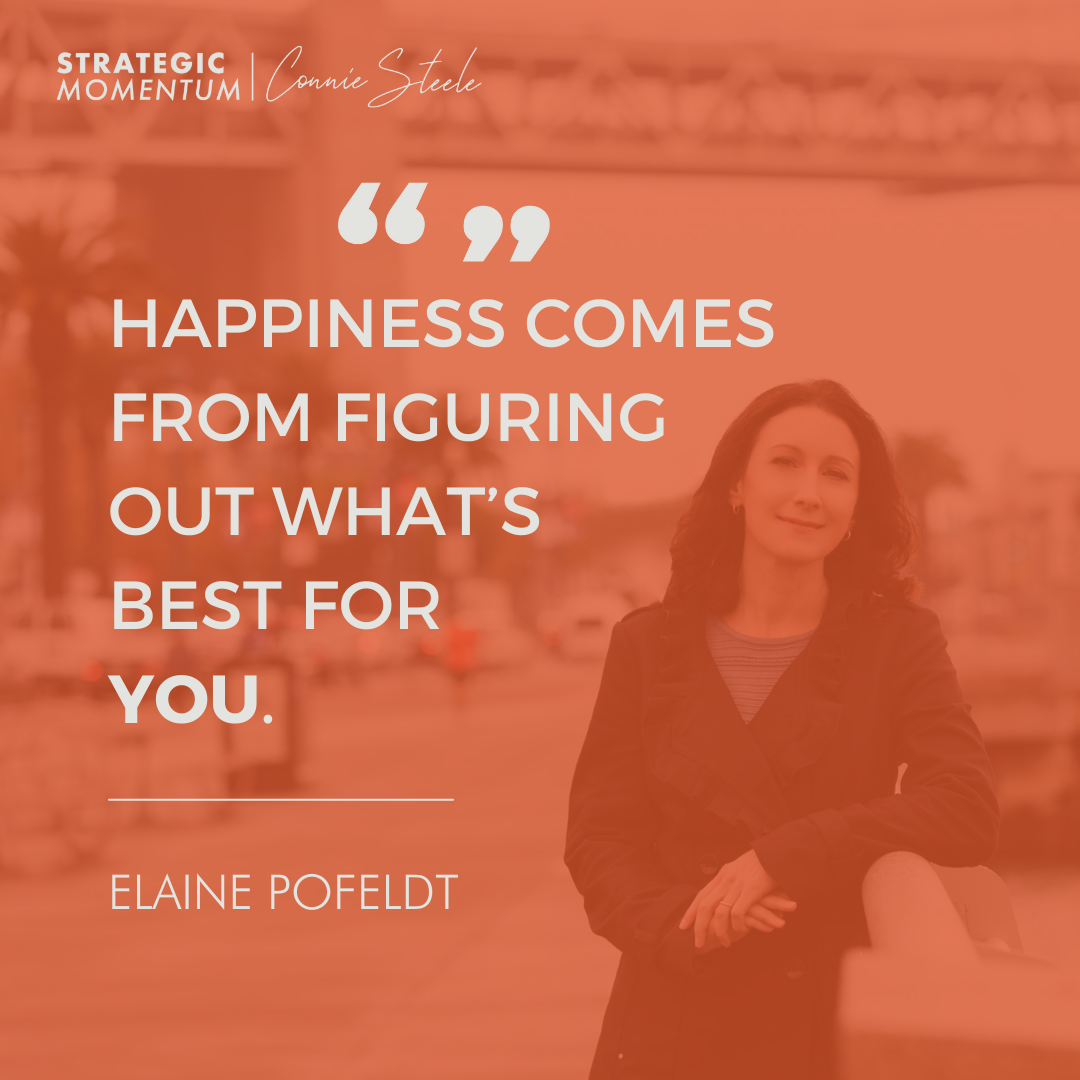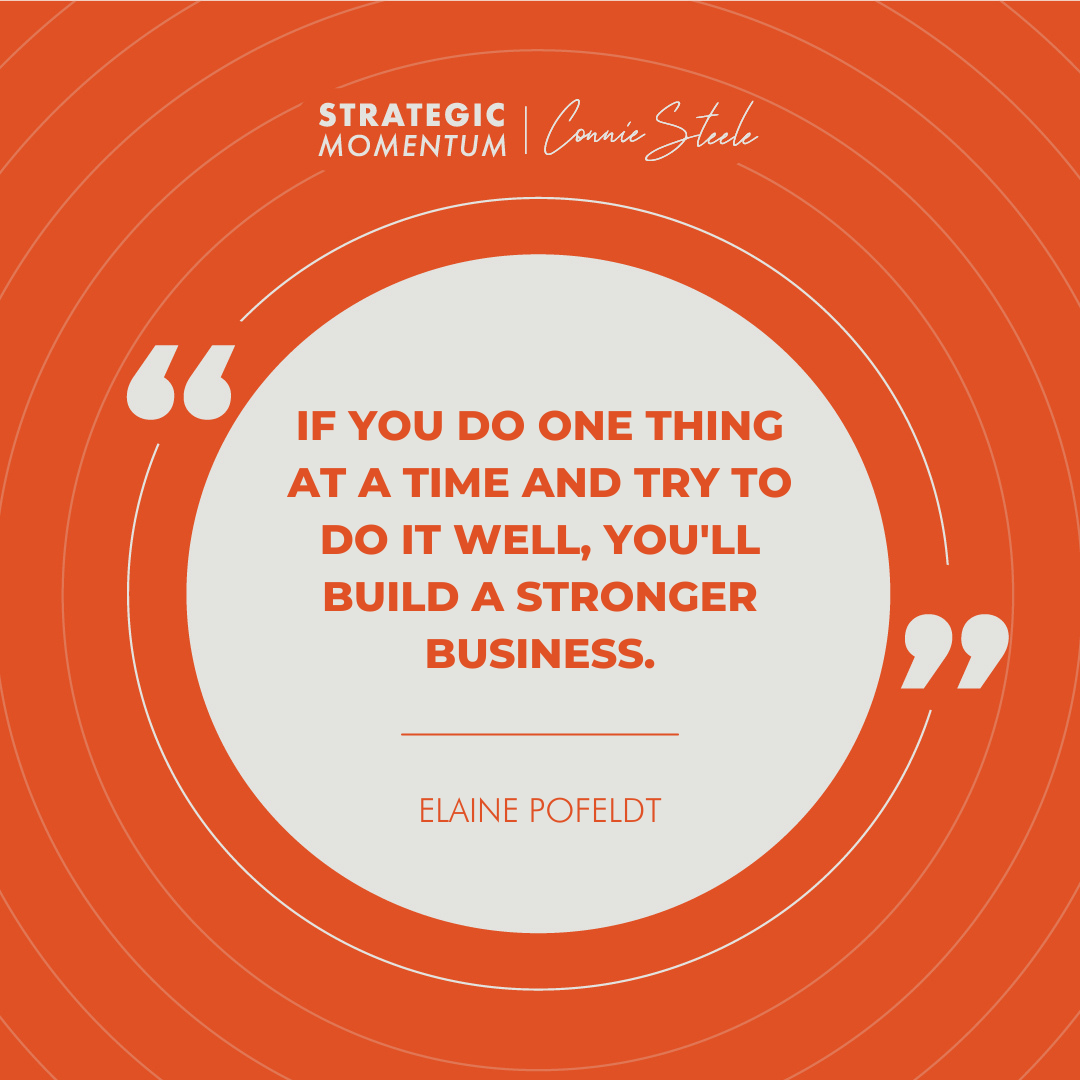Ep. 104 - Becoming Your Own Boss: A Look at Tiny Businesses That Make Big Money - with Elaine Pofeldt
Find Us Wherever You Listen To Podcasts
In the last episode, we talked a lot about The Great Reshuffle — about the record number of resignations, new hires, and new entrepreneurs.
We’re in the midst of this huge period of uncertainty, but people are choosing to take this big risk… even though data indicates that most small businesses fail. People are clearly seeing an opportunity here, or there is such a significant mindset shift in our culture that the risk calculus has fundamentally changed.
So we sat down with Elaine Pofeldt because we wanted to learn more about what differentiates the people who take that leap and make it to the other side happier and more fulfilled.
Elaine is an independent journalist and speaker who specializes in entrepreneurship and careers — and someone with an interesting hybrid career herself. She is author of the upcoming book “Tiny Business, Big Money,” which is available for preorder now and will be releasing on Feb 8, 2022, and "The Million-Dollar, One-Person Business."
Walking the Walk: Becoming Her Own Boss
Elaine isn’t just writing about these entrepreneurial success stories. She walks the walk, too.
She started her career as a journalist, first working at a newspaper and then a magazine, eventually working her way up to Senior Editor at FORTUNE Small Business magazine.
She enjoyed her corporate job, but what she needed and wanted out of her life changed after having a family. And as her family grew, the challenges of juggling work and personal life grew with it.
“I was losing some of the joy of the work that I did and the joy of being a mother. And I felt like I could have a lot more control over my time, and still enjoy doing the exact same type of work, as my own boss.”
But it was a long transition. Elaine left her job in 2007 and started freelancing. She started with what she knew how to do and then evolved in response to client’s needs and market demands.
Elaine was constantly flexing, pivoting, adapting and adjusting to what she observed in the marketplace. She was paying attention to the trends in her clients and identified areas of opportunities that tied to her core strengths. “Being in business means figuring out creative ways to apply [your core strengths] as you go along.”
So when Elaine writes about entrepreneurs, she can relate to the big leap of faith that is required to go solo — and she understands the pressure of not feeling like you can afford to get it wrong.
A Forced Rethink: Can We Go Back to How it Was Before?
Elaine believes The Great Reshuffle (or The Great Resignation) is grounded in those who have had an opportunity to test out a different lifestyle or explore entrepreneurial ventures for the first time, in addition to those who were forced to pursue them out of necessity. And now, there is this anxiety about having to go back to the way it was before.
The pandemic forced a rethink among many employees around what they want out of work, and as a result, we are potentially witnessing a shift in power. People are, many for the first time, seeing an opportunity to take control of their careers — whether that’s by leaving their job for a better one or by going solo.
For many of us, there is also a level of uncertainty that never existed before. Is that job worth the time you’re losing with your family, with yourself? Will you still have that job if things take a turn for the worst again? Is that job worth potentially risking your life for?
Even if you haven’t made a career change in the last couple years, the pandemic has forced people to think differently about what they have control over — and there is a lot that we can learn from the last couple years, and from Elaine’s books, that we can take with us into the future of work.
The Million-Dollar, One-Person Business
Elaine’s first book was "The Million-Dollar, One-Person Business," in which she looks at how entrepreneurs (mostly solopreneurs) are scaling to $1 million in revenue prior to hiring employees.
A key element is efficiency. First they have to identify their greatest strengths. Then they use automation and outsourcing to offload as much as they can of everything else. And those systems, processes, and approaches were always evolving.
Most take a test-and-learn approach to online advertising, leveraging free or low-cost digital tools to amplify what works.
Most of these businesses fall into five categories: professional services, personal services, informational marketing, manufacturing, and real estate.
But possibly the most important commonality between these entrepreneurs is their experimenter’s mindset. They would test, learn, evolve, pivot, adapt, and adjust based on what they saw in the marketplace. So much of this is constantly spotting those important trends, internally and externally, to then see where there are opportunities. This also means they were willing to continually take on more risk.
And it seems like more and more people are prepared to take on these kinds of risks today, or the risk calculus has fundamentally changed to the point where doing nothing feels like a bigger risk. Time and time again in these entrepreneurs’ stories, this mindset is born from changing priorities, and often the realization that your current path is unsustainable.
And like Elaine, the entrepreneurs she profiled created portfolio careers of sorts, where they are leveraging a core skill and then extending it in many different ways. Most of them learned on someone else’s dime first and then leveraged that skill to go solo.
This results in a really interesting hybridization of your career, because you’re bringing together these different skills and interests and passions, then using that to dictate what skills you need to develop and what the right business model is for you in a given industry.
Tiny Business, Big Money
Elaine’s second book is “Tiny Business, Big Money.” She wanted to know how the types of entrepreneurs profiled in her first book pivoted to the next step; when they started to hire employees and how they managed business growth without sacrificing the lifestyle they went solo for in the first place.
On average, the entrepreneurs she talked to got to $1M in revenue after four years. They also started hiring employees at the four-year mark.
But how do you know where to hire first?
This goes back to leaning into your strengths. Once these entrepreneurs had clarity on where they would play best, they had a blueprint for building systems and recruiting people to fill in the gaps. It’s about learning into what feels best, and that’s where you’ll see the business grow.
Possibly the most surprising commonality between these entrepreneurs was that they all exercise daily, and the most common form of exercise was yoga. Elaine says these exercise practices are about creating a base of peace, safety, and mindfulness so that you can do what you want from a position of strength and confidence.
But committing to something like yoga is also a practice — and Elaine says that you have to take this approach to running a business. It takes discipline, sometimes you have to figure out ways to do it even when you don’t want to, but you’re rewarded by building proficiencies and strengthening over time.
Career Advice
There's no one who can force you to be less than who you are, but it puts the onus on you to figure out what you can be and go after it.
Key takeaways
Becoming a one-man, one-million-dollar business or a tiny business that makes big money requires: intentional automation, taking advantage of cheap or free online tools, leveraging a contractor workforce to scale, and an experimenter’s mindset.
Every opportunity could lead to something, falling short of your goal may reveal a path you never would have known about otherwise, and that’s the real value of adopting an experimenter’s mindset — it’s the antidote to failure!
There's an element of luck to some of these success stories, but the thing about lucky opportunities is that you have to be prepared and willing to take them when they appear. Remember, this is a practice.
You probably won’t know where your strengths and weaknesses are inherently. You have to try things out, a lot of things to determine what feels easy and good and what feels hard and stressful. When you’re running your own business, you have the ability to lean into what feels good and outsource what feels stressful. And that's where you're really going to see business grow; when everything is aligned and nobody's forcing anything.
The size of the business isn’t what’s important. The business is a vehicle to fulfill your unique human potential.
Resources
LinkedIn: linkedin.com/in/elainepofeldt
Instagram: instagram.com/milliondollaronepersonbusiness
Twitter: twitter.com/elainepofeldt
Facebook: facebook.com/elaine.pofeldt













